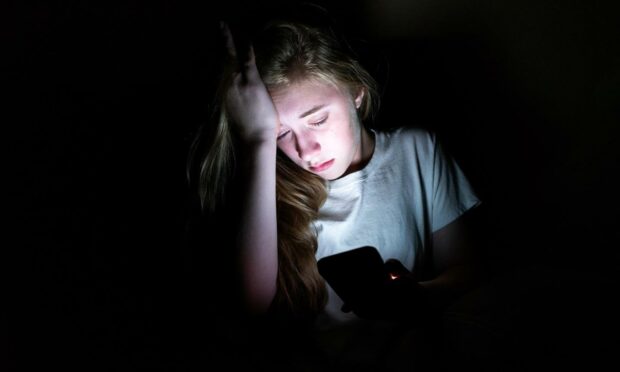The circumstances in which a young person may share a self-generated sexual image can vary.
Some may have sent a photo for fun, or to a boyfriend or girlfriend, which has then subsequently been shared without their consent. Others may have been groomed online or blackmailed into sharing this content.
The Internet Watch Foundation (IWF) has seen reports of self-generated images more than double from January to April 2021, compared with the same period last year – increasing from 17,500 to 38,000.
Our trained Childline volunteer counsellors know the devastating impact that the sharing of nude images can have on a young person.
Some young people told our counsellors they felt embarrassment, fear and self-loathing, while others had concerns about the long-term impact on their future prospects. Some revealed they’d turned to self-harm to cope with their situation.
Young people can remove their nude photos or videos from the internet
If a child has had a nude image shared online, it’s vital they know who to turn to for support. Childline and the IWF recently launched a new tool to help young people remove nude photos or videos of themselves from the internet.
A young person can make a report anonymously at any time of day and the IWF will then work to have the image removed if it breaks the law
The tool, which was first piloted in February 2020, can be found on the Childline website and can be used by anyone under the age of 18.
As part of Report Remove, the user has to verify their age. However, they can expect the same level of confidentiality that they would from all their interactions with Childline; they do not need to provide their real name to Childline or IWF if they don’t want to. And Childline ensures that all young people are safeguarded and supported throughout the whole process.
Digital fingerprint technology
The tool has been developed in collaboration with law enforcement to make sure that children will not be unnecessarily visited by the police when they make a report. A young person can make a report anonymously at any time of day and the IWF will then work to have the image removed if it breaks the law.
A digital fingerprint known as a “hash” can be created from the image. This will then be provided to tech platforms to help ensure the image is not shared or uploaded online.
Any young person who makes a report should also receive feedback on the outcome of their report in one working day from the IWF via Childline.
Additionally, Childline has a lot of information on how young people can keep themselves safe online, as well as advice on what to do if they are feeling pressured to send a nude image and how to cope if a situation of this nature has happened.
For further support, children can contact a trained Childline volunteer counsellor on 0800 1111 or via a one-to-one chat on childline.org.uk
Adeniyi Alade is head of Childline in Scotland

